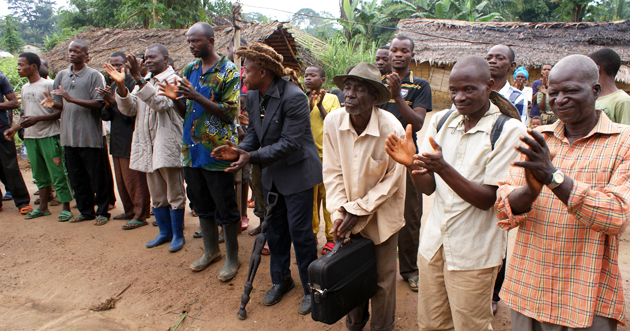Classical Ebola virus disease in the Democratic Republic of Congo
One year into the Ebola epidemic. January 2015
In a typical pattern for equatorial Africa, the outbreak in DRC began on 24 August 2014, the last case was confirmed on 4 October, and the outbreak was declared over on 21 November 2014.

CHAPTER 10 - On 24 August, health officials in the Democratic Republic of Congo notified WHO of an outbreak of Ebola virus disease in the Boende district, Equateur province, immediately raising fears that the outbreaks in West Africa had spread eastwards. The results of virological studies dissolved those fears. Though the DRC outbreak was also caused by Ebola Zaire, the lineage was most closely related to a virus from the country’s 1995 Ebola outbreak in Kikwit. As the laboratory report concluded, “the virus in the Boende district is definitely not derived from the variant currently circulating in West Africa.”
The outbreak in DRC followed a classical pattern, with the index case occurring in the pregnant wife of a bushmeat hunter. Subsequent spread was from person-to-person. The health workers who cared for her were among the first of 66 cases and 49 deaths recorded during the outbreak. The virus remain confined to the remote rural Boende district, located more than 1200 km from the capital Kinshasa and not connected by roads or other forms of easy transportation with other large cities or trade hubs. Motorcycles, canoes, and satellite phones were made available to facilitate outbreak investigation and contact tracing.
In DRC there was long experience with Ebola – this was the seventh outbreak of the disease here. The country had the knowledge and the people needed to stop an outbreak – plus strong technical assistance and support from WHO.
The country’s seventh Ebola outbreak
This was the country’s seventh Ebola outbreak and health officials knew what to do to contain the outbreak, despite a weak health system and a severe shortage of health care staff. The Minister of Health immediately travelled to Boende, together with the head of the WHO country office, to assess the situation, discuss control measures with local health officials, and demonstrate high-level of leadership and concern to the affected population.
A treatment centre was quickly constructed and a clearing was made that allowed a dedicated helicopter to land, bringing in supplies and carrying the first patient samples to a laboratory in Kinshasa, staffed and equipped to perform state-of-the-art genetic testing, with results delivered within hours. Installation of a mobile laboratory at the outbreak site allowed real-time reporting of test results, with quality control performed by a Canadian laboratory.
The country’s President personally supervised the response, including the establishment of a national coordinating committee that met daily in Kinshasa. As another advantage, the health ministry could deploy epidemiologists who had gained experience during previous Ebola outbreaks. Past experiences also led the government to provide psychosocial support, provided by clinical psychologists and medical anthropologists, to affected patients and their families. A social mobilization campaign moved village-by-village to ensure that every household had a good supply of facts and disinfectants.
The classical control measures – case detection, isolation, contact tracing, and infection prevention and control, including safe burials – were applied and worked quickly and effectively. In addition, the Djera area was placed under quarantine, further limiting population movement.
The last case was confirmed on 4 October, just 41 days after the outbreak was notified. WHO formally declared the outbreak over on 21 November 2014.
